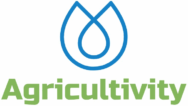Aquaponics is a sustainable farming technique that combines aquaculture and hydroponics to create a symbiotic ecosystem where both fish and plants thrive. With proper planning and management, aquaponics systems can be highly productive and yield fresh, healthy produce and fish. In this post, we’ll share top tips for maximizing yields and achieving success with your aquaponics system.
Choose the Right Fish and Plants
The success of an aquaponics system depends on choosing the right combination of fish and plants. Some fish species, such as tilapia and catfish, are well-suited for aquaponics systems because they produce a lot of waste and can tolerate a range of water conditions. When it comes to plants, choose varieties that thrive in a hydroponic environment, such as lettuce, spinach, and herbs. Avoid plants that require high nutrient levels or have deep roots, as they may not be suitable for an aquaponic system.
Maintain Proper Water Quality
Water quality is critical to the success of an aquaponics system. Proper water pH levels, dissolved oxygen levels, and temperature must be maintained within specific ranges to ensure the optimal growth of both fish and plants. Regular testing and monitoring of water quality are essential to maintaining a healthy and productive system. If any imbalances or issues arise, they should be addressed promptly to avoid any negative impact on the system.
Balance Fish and Plant Density
Achieving the right balance between fish and plants is crucial for maximizing yields in an aquaponics system. Too many fish can lead to an excess of waste, which can overload the system and cause issues with water quality. On the other hand, too few fish may not produce enough waste to provide adequate nutrients for the plants. Finding the right balance between fish and plant density will ensure that both thrive and produce healthy yields.
Provide Adequate Lighting
Plants need adequate lighting to grow, and the same holds for aquaponics systems. Supplemental lighting can help ensure that plants receive the proper amount of light, especially in indoor or low-light settings. LED grow lights are a popular choice for aquaponics systems because they are energy-efficient and can provide a full spectrum of light for optimal plant growth.
Maintain a Consistent Harvest Schedule
Maintaining a consistent harvest schedule is important for maximizing yields in an aquaponics system. By harvesting regularly and at the right time, plants can continue to produce new growth and yields throughout the growing season. Additionally, harvesting fish at the appropriate size and weight will help ensure a sustainable and productive system.
Conclusion
Aquaponics is a highly productive and sustainable farming technique that can yield fresh, healthy produce and fish in a small space. With the right planning, management, and care, aquaponics systems can provide a steady supply of food year-round. By following these top tips for maximizing yields, you can achieve success with your aquaponics system and reap the benefits of sustainable urban agriculture.





